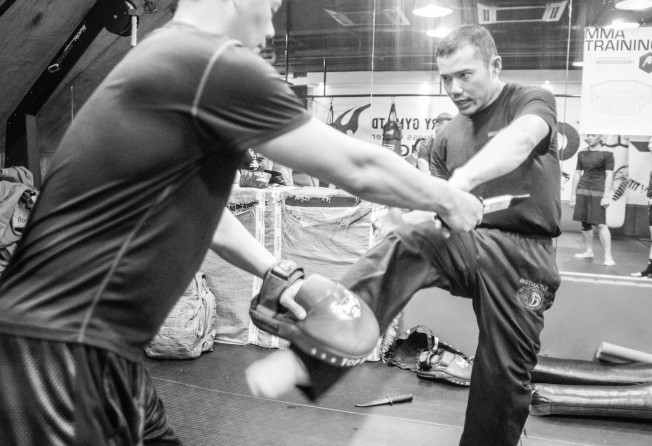Krav Maga Master Derek Poon on Kicking Ass (and Running Away)
Krav maga (Hebrew for “contact combat”) is a self-defence system developed by Hungarian Jew Imi Lichtenfeld in the 1930s and refined in the Israeli army. Derek Poon is Hong Kong director of the International Krav Maga Federation.

How did you reach the level you're at in krav maga? In 2010, I passed an exam that involved topping off a five-hour test with 300 push-ups, 300 squats and 300 sit-ups. But I already knew I had a knack for martial arts when I did taekwondo as a teen. I went on to practise other forms of fighting, such as Thai boxing and Chinese martial arts. Krav maga is actually a mix of martial arts including judo, taekwondo and wing chun. Krav maga students can apply their new moves: In Chinese martial arts, for example, it can take months to learn one move, but our students learn a new move every lesson by being put under stress. For example, I might tell them to do push-ups and then attack them when they get up. I used to hit students with a stick because they didn’t follow instructions to protect themselves. But I don’t hit as hard now, partly because Hongkongers can’t take too much discipline.
Sounds like serious business! It is serious business. To most learners, krav maga is just a self-defence skill, or even a form of exercise—but for trainers, krav maga is about counterterrorism. Every year, I go back to Israel to train for two weeks with other international trainers. That’s when we learn new moves, because the bad guys are always updating their methods of attack. In South America, for example, they’re now sticking knives in your butt instead of your neck.
So do you fight terrorists? If I did, I wouldn’t tell you. But right now my mission is to teach krav maga to as many people as I can “So that one may walk in peace.” That’s our motto. I’m also trying to groom more trainers here—there are only about four right now. We’re careful about choosing instructors because we don’t want our skills to fall into the wrong hands. And not everyone’s got what it takes to be a trainer. For one thing, students challenge us from time to time to prove krav maga really works. Once, a student tried to throw me to the ground while I was grabbing him by the neck during a demonstration. I didn’t let go, so he got hurt.

Have you always been this fit? I used to weigh almost 200 pounds. I ran my own clothing company and had to make frequent trips to the mainland, where I drank a lot. So I decided to get back in shape by going to the gym, picking up martial arts again and eventually getting certified as a personal trainer. After I got certified I started working full-time at a clinic for diabetics to help patients manage their weight. I just felt it was more meaningful than the clothing business.
Have you ever been seriously injured? I’ve gotten a slipped disc in my lower back from not warming up properly before teaching. When it happened I couldn’t even walk, but I recovered in a few months by training targeted muscles. Another time, while I was training in Israel, my training partner went at me full force and was on the verge of breaking my neck.
What’s your best self-defence tip? Avoid confrontations as much as possible, especially since you don’t know who you could be against. One time, a mugger asked me for money, so I gave him $20 and he left without giving me trouble. Violence should not be the solution, but when push comes to shove, krav maga gets the job done: We don’t have any rules. Kick your attacker in the groin, bite him, strike the back of his head, break his fingers… Be as violent as you can. Then run.